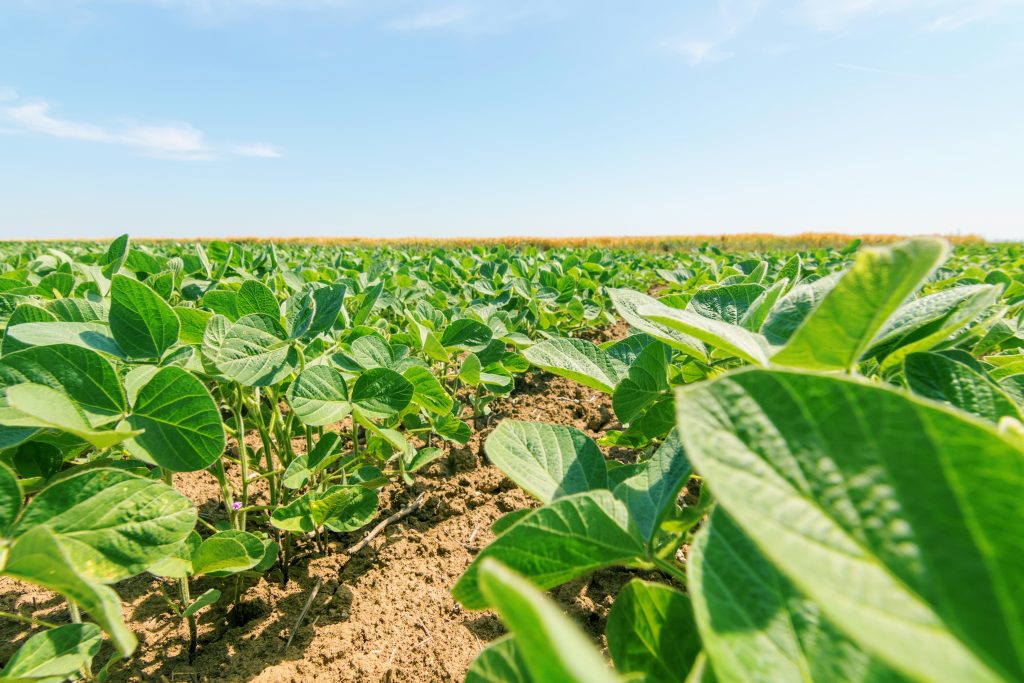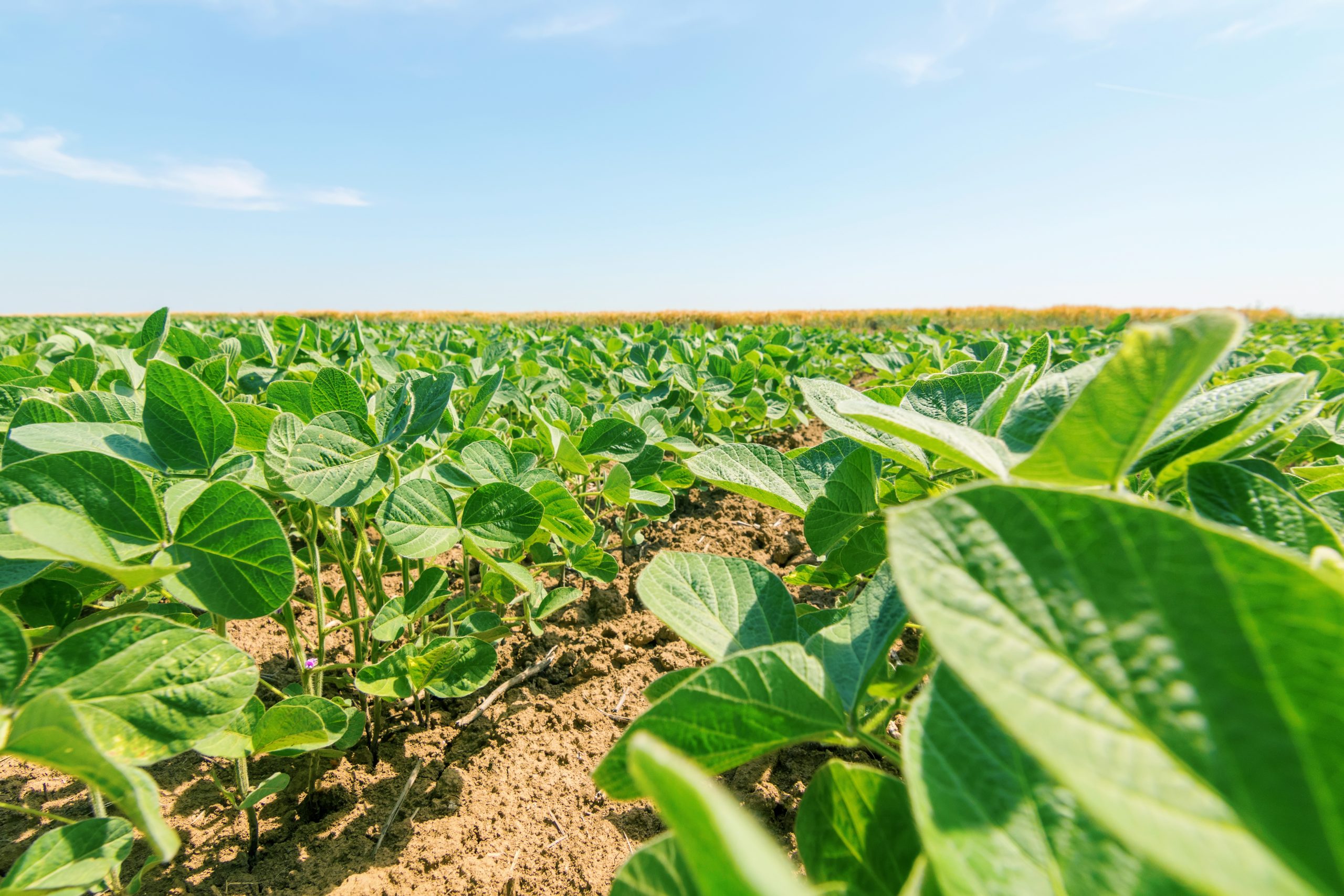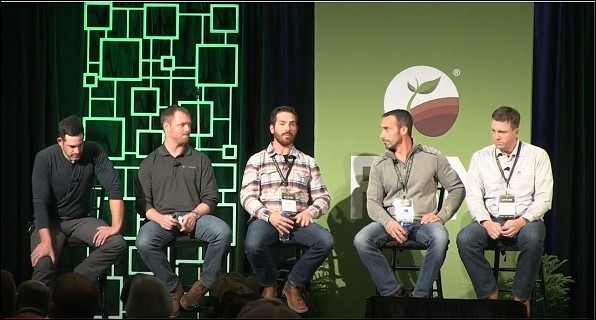- Published On: August 15, 2019
- Author: AgriSecure
One of the biggest concerns farmers have about transitioning into organics is that they’ll lose their crop insurance. But that’s a myth — there is government-subsidized crop insurance for both organic and transition acres, and the program is better today than it’s ever been.
But take note. Guarantees, coverage details, building your actual production history (APH), and risk considerations are significantly different compared to conventional crop insurance. For example, insurance guarantees will be based upon U. S. Treasury yields (T-yields), which are typically conservative, until you have an opportunity to build your APH. Additionally, some organic crops may not be insured in your area today.
Because of these differences, you need to understand the growing season risks of each crop and evaluate the options available for managing your risks by working with a partner, such as AgriSecure, and an agent who can advise you on the best plan for your operation.

Work with a knowledgeable agent
Insurance for organic and transition acres is complex. Therefore, the No.1 step you can take to set yourself up for success is to find an agent who specializes in crop insurance, especially one with experience insuring organic crops.
This is crucial because no two situations in organic are alike and there are several nuances that will make a significant impact in structuring your policy correctly. By working with an inexperienced agent, it is unlikely they will fully understand the rules and nuances with organic crop insurance, which could result in significant penalties or reductions in your coverage.
Unfortunately, there’s currently no professional designation for crop insurance agents. As a result, it can be challenging to determine an agent’s level of knowledge and training. But there are a few things you can look for and questions you can ask to help ensure you choose the right agent for you.
First, look for an agency that has a website with a page dedicated to crop insurance. Even more preferable is to look for an agency that has at least one person dedicated primarily or solely to crop insurance. This not only ensures they’re knowledgeable, but that they’ll have the bandwidth to take you through the process of a claim during rough times. If an agency has someone dedicated to more than just crop insurance, such as health and property-casualty, that’s a surefire sign they don’t specialize in crop insurance.
Once you find someone who specializes in crop insurance, find out if they’ve ever insured an organic farm. If they haven’t, it doesn’t mean they can’t learn it. But having the conversation will help you determine if they can be a good partner for you.
Start the process early
Once you find an agent, get the conversation started with them as soon as possible.
At the very minimum, start a month before the sales deadline, which is March 15 for most areas of the Midwest. However, given the amount of work involved — making sure your organic certification plan matches up to the right entity, that your FSA paperwork is in line, the final sale of the grain matches up with the policy name — you’ll want to give yourself more than 30 days if you can.
Ideally, you should start the process a year in advance. This is because, much like a tax accountant who can advise you on what to do based on the current tax laws, your agent can give you recommendations on what would be best for your risk management. If this causes you to change your plans, a year would give you enough time to make them. It also gives your agent time to get more familiar with organic crop insurance, if they aren’t already.
5 factors in creating the right insurance plan
There are several options and factors that go into creating the best crop insurance plan. Here are four things you should consider or discuss with your agent:
1. Crop insurance unit structure
Crop insurance is broken into crop insurance units, which means that all of the acres within that unit are standalone. It matters what unit structure you have in your operation, whether it’s basic, optional or enterprise, and you need to consider the impact your organic acres will have on your unit structure, as well as your overall risk profile.
2. Create separate entities
Because crop insurance units often lump conventional and organic acres under the same policy, we usually recommend splitting your operation into separate entities. This way, your organic acres are in one entity and conventional in another. This will allow you to differentiate those acres in your insurance policies. We recommend creating that separate entity for organic crops during the transition period.
3. Additional Insurance protection
Multi-peril insurance may not be fully adequate to cover the value of your organic crops, so you may want to consider alternative policies for additional protection. Hail coverage is a common one if you’re in a high-risk area for hail damage, but there’s also weather-index insurance, which can cover extreme rainfall, drought and temperatures.
4. Whole-farm revenue protection
If you have organic crops that are not covered under organic crop insurance, one option is whole-farm revenue protection, which would put all commodities on the farm under one insurance policy for up to $8.5 million in insured revenue. Whole-farm revenue also works well when you have at least three crops.
It’s important to note there are very few agents versed in this program, so if you’re interested in it, be sure to find a knowledgeable agent and work with them early, because it takes extra time to bring in all of the data required and get the policy set up.
5. Develop a strategy for a strong APH
In addition to creating the right insurance plan, you’ll also want to create a strategy on how you will build up your APH and replace T-yields.
T-yields are conservatively low, and in a way are an inadvertent built-in penalty for organic growers. Because of this, you’ll want to replace them with actual yields as quickly as possible to improve your insurance guarantees and revenue floor, assuming that your actual yields will be higher than the T-yields. But it takes some strategy on how to accelerate your departure from T-yields without harming your organic production.
Crop rotation is the main component to this strategy, as you’ll want a rotation that not only builds up your APH, but is also agronomically sound to maximize yields. This is another area where it’s important to work with an expert like AgriSecure, which can help you develop a rotation that is beneficial to both your revenue floor and the agronomics of organic production.
Looking for advice?
As outlined above, crop insurance can provide wonderful revenue guarantees for many organic crops. But only if it is structured correctly. If you are seeking out advice on crop insurance, both AgriSecure and FBN Crop Insurance are eager to help. While AgriSecure is not a licensed crop insurance provider, we can help you understand different crop options and rotations and prepare questions to ask a crop insurance agent.
FBN Crop Insurance, on the other hand, is committed to providing the best service possible on all crop acres — including transition and organic! Contact FBN Crop Insurance and/or AgriSecure to learn more.
By Eric Sorensen, FBN Crop Insurance and Bryce Irlbeck, AgriSecure Founder and Owner of B&B Irlbeck Farms
Related Articles
-
Imports Have an Impact on Organic Crop Prices: Here’s Why
Organic soybean prices are skyrocketing. The Jacobsen reported that prices were up to $32 per bushel in the Midwest in May 2021. What’s behind this impact on organic crop prices? And why aren’t organic corn premiums keeping up? In short: it’s all about supply and demand, especially imports, says David Becker. David is an analyst […]
-
New Options Offer Farm Loans for Organic Transition
If securing farm loans for organic transition feels daunting, we have some good news. It’s not as hard as it used to be. In fact, there’s a number of new options that could provide a solution for you and your operation. Traditional lenders, farmland investors, non-profits, and even big food companies are starting to create […]
-
Organic Farming Loans Support Growers during Transition
Ask a farmer what’s keeping them from transitioning to organic row crops, and you may be surprised to hear a common answer. Finances. It’s often a struggle to find organic farming loans tailored to their needs. Yes, organics offer excellent premiums and can bring long-term profitability. But first you have to get through the 36-month […]
-
Organic Breakevens: What to Know and How to Calculate
If you’re thinking about organics, you’ve probably debated whether it’s going to pay off — literally. Yes, the price premiums are good, but you’ve heard your yields will take a hit. How can you predict profitability? The answer: calculating your organic breakevens. What are an organic breakevens? Simply put, it’s a way to calculate what […]
-
Know Your Numbers to Push Crop Profitability
Yield is often the top priority in farming. The truth, though, is that the highest yields will not necessarily result in the highest ROI. And this is especially the case for organic production. We know good execution results in the best yields, but the best way to maximize your crop profitability is to know your […]
-
6 Ways to Protect Organic Profits in Uncertain Times
Economic uncertainty hits all sectors of the agriculture industry, including organics. The good news? It’s possible to safeguard your organic profits. For a start, it’s even more important for organic farmers to focus on executing their operations really well. The better the execution, the better you can weather the market conditions and remain profitable. Here […]
-
5 Steps for Financing the Transition to Organics
Profits. They’re one of the primary reasons farmers decide to move into organic production. Financing the transition to organics, though, can be one of your biggest hurdles. That’s why the support of a banker or ag lender can be a lifeline for farmers looking to get into organics. The right backing helps you build an […]
-
4 Keys to a Strong Organic Fertilizer Strategy
Questions about an organic fertilizer strategy are common in organic farming. How do I provide enough nutrients? In particular, nitrogen. How do I manage my crop and soil without using synthetic fertilizers? Fertilizer can come from a variety of organic sources, including animal waste, decomposing plants, and nitrogen-fixing crops like soybeans and clover. So it’s […]
-
Consider Organic Farming? Yes.
With so much economic uncertainty caused by the COVID-19 pandemic, you may be wondering: Is now the right time to transition into organic crop production? Is this the right time to increase the number of organic acres you’re already farming? My answer, yes. Current market conditions, falling commodity prices for conventional crops and somewhat lower […]
-
80 Million Millennials Can’t Be Wrong: Farmer Panel
80 million millennials are a part of the driving force behind the rapid growth of organic food demand. So why aren’t more farmers transitioning into a system that sees premiums of 2x over conventional and profitable margins? In a panel that took place at FBN’s Farmer2Farmer V event, AgriSecure co-founder and organic farmer Bryce Irlbeck […]
Get in the know
Our newsletter, it’s a quick read. You’ll get industry news plus all the latest organic insights. Who doesn’t want that?










